Condonstown
Houses within 15km of this house
Displaying 122 houses.
Houses within 15km of Condonstown
Displaying 122 houses.
| House name | Description | |
|---|---|---|
| Aghern/Ahern House | Brabazon Esq was resident in the 1770s and 1780s. The home of Spotswood Bowles in the first half of the 19th century. The buildings were valued at £47+ in the early 1850s and held from the representatives of William Beamish. Spotswood died in 1864 and was succeeded by his son George who was in turn succeeded by his nephew Spotswood in 1886. Relatives of the Bowles owned this property until the 1970s. In 1942 the Irish Tourist Association Survey mentions the ruins of Aghern Castle in the grounds of Mrs. Spotswood Bowles property. Aghern was uninhabited for a time but has recently been restored. |

|
| Castle Hyde | A late 18th century house, which was the home of the Hyde family. In 1786 Wilson describes it as "a beautiful house, magnificent demesne, highly cultivated, the seat of Arthur Hyde". At the time of the sale of Castle Hyde in 1851 the house was occupied by Spencer Cosby Price, the brother-in-law of John Hyde. The house was valued at £115. Castle Hyde was bought by John Sadleir MP in trust [for Vincent Scully]. Major Chichester was the tenant from year to year in 1861. John Wrixon Becher, second son of Sir William Wrixon Becher of Ballygiblin, county Cork, subsequently lived at Castle Hyde. in the 1870s John R. Wrixon of Castle Hyde is recorded as the owner of 1,263 acres in county Cork. He was resident in 1906 when the buildings were valued at £96. The Irish Tourist Association Survey of 1942 indicated that the house was then "occupied by the military". Castle Hyde is now the home of dancer, Michael Flatley. |

|
| Kilshannig | This house was built for Abraham Devonsher, a Cork banker and Member of Parliament, in the 1760s. It remained the home of the Devonsher family until sold to Edward Roche, father of the 1st Earl of Fermoy, pre 1837. Lewis records it as the winter residence of the Roche family. At the time of Griffith's Valuation it was occupied by James Kelly of Cahircon, son-in-law of Edward Roche, and valued at £58+. In 1943 the Irish Tourist Association Survey mentioned that it was the home of the McVeigh family. The Sardinian architect, Davis Ducart, designed this house and according to the Irish Georgian Society it is considered one of the very finest Palladian houses in Ireland. The Society is currently supporting the restoration of parts of this house. see http://www.igs.ie/Programmes/Conservation-Grants/Kilshannig.aspx |

|
| Knockanroe | A house valued at £17 at the time of Griffith's Valuation and held by Robert A. Rogers in fee. It is not marked on the first Ordnance Survey map and was probably built in the 1840s. | |
| Cloghfadda House | Occupied by Joseph Wiseman in the early 1850s, held from Robert A. Rogers and valued at £12. The Crofts sale rental of 1881 record Cloughfadda House as a comfortable residence in "owner's hands". A house is still extant at the site. | |
| Convamore Upper | J. Delany was the proprietor of Upper Convamore in 1837. George Crofts occupied the house in the early 1850s. He held it from the Reverend G. Atkins Collins and it was valued at £16. The property was later bought by the Reverend Maurice Collis who sold it to the Earl of Listowel. Unoccupied for much of the 20th century it was demolished in 2000. | |
| Convamore | This property was sold by the Bailey family to the Hares in the late 18th century. William Hare, 1st Earl of Listowel, built a new house beside the River Blackwater in the early 19th century. He was residing at Convamore in 1814. At the time of Griffith's Valuation the buildings were valued at £100 and the property was held by the Earl from the representatives of D. Callaghan. Callaghan's interest was advertised for sale in July 1853. It was still the Earl's seat in 1894. The house was burnt during the War of Independence in 1921 and is now a ruin. |

|
| Woodville | Woodville was occupied by the Reverend William Berkley in 1814 and in 1837 by Mrs Gibbons. Anne Gibbings was resident in the 1850s [widow of Bartholomew Gibbings of Gibbings Grove]. She held the property from Martha Jaunsey and the buildings were valued at £17.15 shillings. Her fourth son Robert Gibbings is described as "of Woodville" in Burke's Landed Gentry. A note on the sale rental of 1862 records the purchase of Lot 1 Woodville by Mr Starkey [Dr William Starkey]. The house remained in the possession of the Starkey family until the early 20th century. |
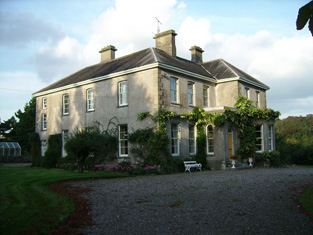
|
| Renny | This house, overlooking the River Blackwater, may have been part of the Widenham estate which passed to the Smyths. The site had earlier associations with the poet Edmund Spenser. Wilson, writing in 1786, refers to "Rinny, the seat of Mr. Nagle, which was formerly part of the estate of the immortal Spenser". In 1814 the Reverend C.P. Wallis was the occupant. At the time of Griffith's Valuation the house was occupied by Henry Smith who held the property in fee, the buildings were valued at £23. Henry Smyth advertised the house and 541 acres for sale in May 1851, all it required at that time was a "small outlay in paint and paper to make it at once fit for occupation". In 1885 Walford noted Renny as the seat of John Blackburne. Hajba writes that the last occupant was Captain [Pepper] Roberts. The Earl of Listowel demolished the house following the Captain's death in 1900 though many of the buildings shown on the 1st edition Ordnance Survey map had already disappeared by then. | |
| Gurteen | Home of the Campion family in the first half of the 19th century held from the Earls of Listowel. Luke Campion was resident in 1837 and Lewis writes that it had "been greatly enlarged and improved". Mrs Mary Campion was resident in the early 1850s. The buildings were valued at £13.15 shillings. Later occupants were stewards to the Earl. The house was demolished in the early 20th century. | |
| Cregg South [Avonmore] | The Phipps "of Cregg" are recorded in "Burke's Irish Family Records" from the early 18th century. By the time of Griffith's Valuation the house in Cregg South valued at £22 was occupied by John Carey who held it from John Phipps. On the 25-inch Ordnance Survey map of the 1890s the house at this site is labelled Avonmore. A house is still extant there. | |
| Templenoe | Hajba writes that this house, on the banks of the River Blackwater, was built in 1761 by the Hydes of Castle Hyde. William Hyde (died 1790) of Templenoe was the son of John Hyde of Creg Castle and grandson of Arthur Hyde of Castle Hyde. He married Catherine Lane. William Lane Hyde was resident in 1837 and at the time of Griffith's Valuation. He held the property valued at £20 from John Phipps. His estate of 584 acres was advertised for sale in July 1850. The present Templenoe House was the residence of the Mounteagles in the latter half of the 20th century. |
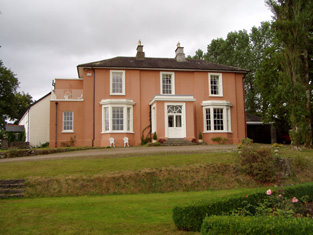
|
| Cregg Castle | Built by the Hyde family and occupied by John Hyde, a younger son of Arthur Hyde of Castle Hyde, in the mid 18th century. Wilson refers to the residence of John Hyde, "near the ruins of Creg Castle" in 1786. By 1810 Cregg Castle was occupied by Colonel William Stewart from Fort Stewart, county Donegal who had married Anne Hyde. The Colonel was the proprietor in 1837 and Mrs Anne Stewart was still resident in the early 1850s. Her nephew John came to live at the house following the sale of Castle Hyde in 1851 and following his death in 1885 it was leased to various persons. It is still extant. |

|
| Woodfort | George Massy occupied this house, which he held from the Reverend Samuel Adams, in the early 1850s. It was valued at £20. The home of the Magniers at the beginning of the 21st century. |

|
| Creggolympry | Henry Adams occupied a house at Creg, Fermoy in 1814 and the Reverend Samuel Adams in 1837. This house valued at £32 was held by the Reverend Samuel Adams in fee at the time of Griffith's Valuation. Guy's ''Cork Alamanac'' (1907) records Miss Adams as resident at Creggolympry. Buildings still remain at the site. | |
| Rockville | At the time of Griffith's Valuation occupied by Michael Mockler and held from the representatives of Matthew Hendly, the buildings were valued at £26. The Mocklers advertised the sale of their interest in July 1851 and July 1853. The sale rental records the lease of Rockville by Ferguson Hendley to the Reverend James Mockler for 3 lives in July 1841 and that £2,000 had been spent on the house. Caroline Bourke occupied a mansion house with 37 acres in the townland of Licklash in 1906. It was valued at £60. In the 1870s Michael Bourke of Lecklash owned 37 acres. This house later became a summer home of Sir Oswald Mosley. Also known as Isleclash House. |
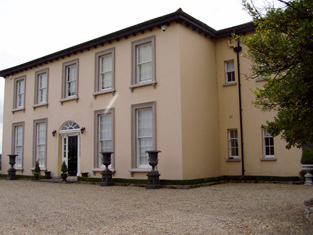
|
| Richmond | Located in the town of Fermoy, Richmond was occupied by H. Smyth in 1837 and by George Walker. It was the residence of the Furlong family in the second half of the 19th century. In the 1920s they sold the house to the Loreto Sisters. Still part of the convent complex at the beginning of the 21st century. |

|
| Bellevue | Hajba writes that William Glissan sold this property to Thomas Dennehy of Clashmore, county Waterford. Bellevue was the home of Thomas Denehy in the first half of the 19th century, inhabited by him in 1814 and 1837 and by Daniel O'Neill in the early 1850s who held it from Thomas Denehy. The house was valued at £35. Later the home of the Dunleas, now a ruin. |
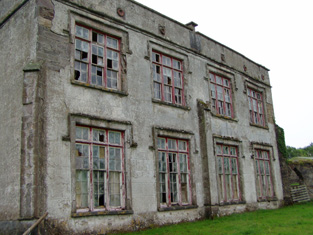
|
| Brook Lodge | The Lord Chancellor is given as the occupier of this house at the time of Griffith's Valuation. The Court of Chancery may have held the property from John Denehy at this time. The buildings were valued at £13. In 1942 the Irish Tourist Association Survey notes that it was once the residence of General Sir Thomas Dennehy and was then owned and occupied by James Scannell. A new house is now located on the site. | |
| Bettyville | The home of the Nason family in the early 19th century, occupied by Richard Nason in 1814 and 1837. By the early 1850s William Corbin was resident holding the house valued at £14.10 shillings from the representatives of Richard Nason. William Corbin was still living at Bettyville in the 1870s. This house is no longer in existence. | |
| Rath-healy | In 1786 Wilson refers to Rath-hely as the seat of Mr. Bryan. It was the home of Arthur Hyde Lucas and his son and namesake in the 19th century. Arthur Hyde Lucas is recorded as occupier at the time of Griffith's Valuation, holding the property from John Hyde when it was valued at £20. In 1880 the property passed to Henry John Lucas, nephew of the second Arthur Hyde Lucas. Sold by the Lucas family in the 1920s and still inhabited. | |
| Licklash | Occupied by James Reid in the early 1850s and held from the representatives of Matthew Hendly, the buildings were valued at £18. This house later became a summer home of Sir Oswald Mosley. Also known as Isleclash/Ileclash House. This house was offered for sale in 2010. http://www.michaelhdaniels.com/index.cfm?fuseaction=propdetails&Prop_RefId=24 |
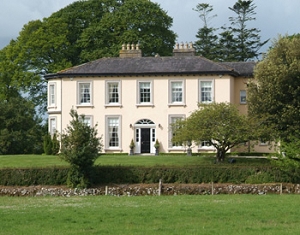
|
| Grange Hill/The Grange | William Forward Austin was resident at Grange Hill in 1837 and in the early 1850s when he held the house valued at £41 in fee. Hajba writes that this property belonged to William Forward and was inherited by one of his daughters who was married to William Austin. William F. Austin was their son. Later the home of the Sadliers [1906] and Magniers, still inhabited. William Sadleir medical doctor was resident from circa 1866. |
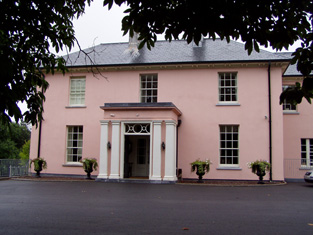
|
| Ashfield House | Occupied by John William Anderson in 1837 and by Denis Downing in the early 1850s who held the property from John Hyde. It was valued at £25. In 1942 the Irish Tourist Association Survey indicated that it was then the residence of William Bowden. This house is still occupied. | |
| Grange Farm | Originally part of the Forward estate which passed to Garret Nagle who had married the sister of William Forward. Marked on the first Ordnance Survey map as a farm yard by the 1850s James Roderick O'Flanagan was resident in a house valued at £13.5 shillings. He held the property from the representatives of John William Anderson. |

|
| Fermoy House | Lewis refers to Fermoy House in 1837 as the residence of the late J. Anderson “to whom not only the town owes its prosperity but the entire country…”. It was then occupied by Mrs Hennis. The Reverend Maurice Collis was in residence by the time of Griffith's Valuation. He held the property from Sir Robert Abercrombie and the buildings were valued at over £50. In 1786 Wilson writes of a house at Fermoy, the seat of Mr. Bryan. The Irish Tourist Association Survey of 1942 states that Fermoy House was then the property of Maurice Cooke Collis and was divided into five flats. The house was demolished in the 1960s. | |
| Bishop's Island | Grice Richard Smyth held buildings valued at £25 in the townland of Bishop's Island at the time of Griffith's Valuation. ''Burke's Irish Family Records'' refers to his father Henry Mitchell Smyth of Bishop's Island. In 1786 Wilson notes Bishop's Island as the seat of Mr. Mitchell. | |
| Bridestown | Leet records the Reverend Edward Carleton as resident at Bride-town, Rathcormack. E. Morgan was the proprietor in 1837 and at the time of Griffith's Valuation, holding the property in fee. The buildings were valued at £42. Bence Jones writes that the Morgans sold the property in the second half of the 19th century having been ruined by the gambling of Lady Louisa Morgan, known as "Unlimited Loo". Later the home of the Lindsay and Horgan families and still occupied. |

|
| Killuntin | Home of a branch of the Roche family, occupied by Edmund Roche in 1814, by R. Roche in 1837 and by Richard V. Roche at the time of Griffith's Valuation. Richard Roche held the property in fee and the buildings were valued at £15.10 shillings. Hajba records the house as a ruin. | |
| Ballyvolane | Hajba writes that Ballyvolane was bought by Sir Richard Pyne of Waterpark, Lord Chief Justice of Ireland, from the Coppingers in the early 18th century. It remained in the possession of the Pyne family until the mid 20th century and is still occcupied. Valued at £44 at the time of Griffith's Valuation, the house was occupied by Jasper Pine who held it from Thomas, George and Henry Walker. By 1906 the mansion house at Ballyvolane was valued at £70+ and occupied by George M.Pyne. |

|
| Ballyrobert | Hajba writes that Michael Mackay built a house beside the ruined castle of Ballyrobert in the 1820s and he is recorded as resident there by Lewis in 1837. In the early 1850s the house was valued at £23, occupied by Michael Mackay and held from John Peard. Michael J. Mackey occupied the house in 1906. This house no longer exists. | |
| Coole Abbey | This house was the home of a branch of the Peard family until the early 20th century and is still inhabited. It was occupied by Richard Peard in 1814 and by Henry Hawk Peard in 1837. He was still resident in the early 1850s and held the house valued at £36 from James H. Smith Barry. By the end of the 19th century Orr McCausland was the owner of Coole Abbey. |
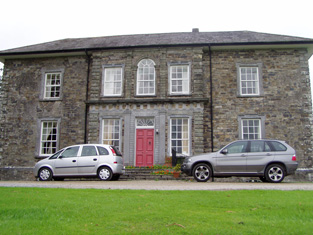
|
| Kilcor Castle | The home of the O'Brien family in the 18th and 19th centuries, sold by them in the mid 19th century. Cornelius O'Brien was the occupant in 1837 and at the time of Griffith's Valuation. He held the house valued at £17.15 shillings from James Reid. Kilcor was bought by Francis Doyne Dwyer and later passed to the Phipps family through marriage. In the 1940s the Irish Tourist Association Survey reported that it was the residence of Captain H. Phipps. |
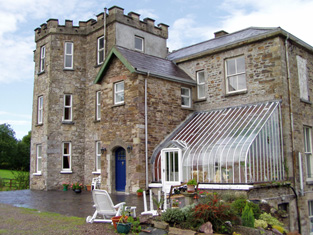
|
| Mohera | Hajba writes that Michael Mackay was recorded as resident here in 1824. By 1837 John O'Sullivan was resident and was still the occupier at the time of Griffith's Valuation. The buildings were then valued at £14 and the property was held from Major General Conyers. Home of the McAuliffes in the 20th century. |

|
| Rathbarry Cottage | Rathbarry Cottage was occupied by Major William Love Peard at the time of Griffith's Valuation. The property was held from the Reverend R. Gumbleton and the buildings were valued at £11. Some ruined walls remain at the site. | |
| Towermore | The home of Mrs Maria Oliver in 1837 but leased to Frederick C. Hayes in the early 1850s. The house was valued at £45. Maria was the widow of Charles S. Oliver of Inchera and a daughter of A. Morris of Dunkettle. A. Morris Oliver is recorded as a subscriber to Lewis ''Topographical Dictionary'' published in 1837 but is not mentioned in Burkes. Earlier, in 1786, Wilson refers to Tormore as the seat of Mr. Connor. This house was not occupied at the end of the 20th century although still extant. | |
| High Park | Occupied by the Reverend J. W. Edgar in 1837 and by Bridget Hogan in the mid 19th century, valued at £12+ and held from William Coppinger. This house no longer exists. | |
| Baneena | John Ross occupied a house at Baneena North valued at £11.10 shillings in the mid 19th century. He held the property from Abraham Devonsher. This house is not surrounded by a demesne on the first Ordnance Survey map. | |
| Mountain Lodge | Originally a shooting lodge of the Devonshers, it was the home of Abraham John Devonsher in the mid 19th century. He held the property valued at £3 in fee. It is now a ruin. | |
| Hollyhill | David Hallahan occupied Holy hill, Rathcormack, in 1814 and S. Croker in 1837. Eliza Croker held the property from Francis C. Reeves in the mid 19th century, when the buildings were valued at £11.10 shillings. [for this Croker family see http://members.iinet.net.au/~nickred/croker_research/The_Irish_CROKER.pdf page 121]. Later the home of the Campion and other families, this house is no longer extant. | |
| Ballyglissane | A Reeves home held from the Devonsher family, occupied by F.G. Reeves in 1837 and by Edward Reeves in the early 1850s when the buildings were valued at £30+. Later the home of the Warren family and still a family residence. |

|
| Bushy Park | Hajba writes that Gifford Campion, born at Leitrim, acquired the lands of Bushy Park in the mid 18th century and that his son Richard Gifford Campion possibly built the house in the late 18th century. Bushy Park, Rathcormack, was occupied by John Walsh in 1814 and by Richard G. Campion in the early 1850s. The buildings were valued at £18.15 shillings and held from Major Heliger Lloyd. Occupied by William Moore Hodder in 1906. This house is still a residence. |

|
| Mellefontstown | The main residence of the Nason family in the 18th century, John Nason was resident in 1814 and Pierce Cotter in the early 1850s. Cotter held the property from Thomas Wise and the buildings were valued at £19+. In May 1863 Pierce Joseph Cotter's estate at Mellifontstown, containing the house, demesne and 246 acres was advertised for sale. It was held on a lease dated 1852 from Francis Wise to Pierce Cotter for 185 years. A new house now stands on the site. | |
| Scartbarry | Home of the Wilson family in the 19th century, occupied by Edward Wilson in 1814 and by Ellen Wilson in the early 1850s, when the house was valued at £11 and held from James H.S. Barry. Edward Wilson of Scartbarry owned 26 acres in the 1870s. This house is still a family residence. The interest of the descendants of the Wilson family of Scartbarry and of James Milner Barry in the lands of Skehannagh and Coolequane, barony of Barrymore were offered for sale in the 1850s. |

|
| Ballyready | A house located on the Devonsher estate, occupied by Patrick Bourke in 1814. The house was valued at £12.10 shillings and occupied by John Fetnam at the time of Griffith's Valuation. It is still a family home. | |
| Ballynahina | Ballynahina was a Barry home inhabited by Philip Barry and his wife Mary Ann at the end of the 18th century. Lewis refers to Gerard Barry at Ballinahina House and Reverend Dr Barry, Parish Priest of Fermoy for half a century, at Ballinahina Cottage. Edward Barry was resident at Ballynahina, valued at £11, in the early 1850s. He held the property from Gerald Barry. This house is still extant. |
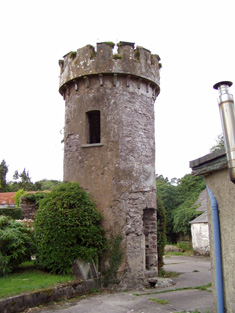
|
| Bride Villa | Hajba writes that this building was originally a coach inn. By the time of Griffith's Valuation Edward Barry a doctor was resident. He held the property valued at £14.15 shillings from Viscount Riversdale. This house is stil inhabited. |
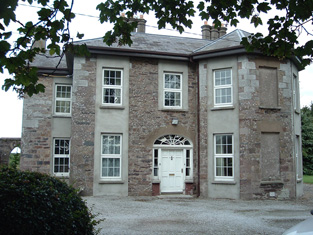
|
| Lisnagar | Originally a home of the MacAdam branch of the Barry family, sold to the Lawless brothers in the 1770s and soon afterwards bought by William Tonson. In 1786 Wilson refers to the seat of Lord Riversdale, close to Rathcormack. The house was occupied by the Reverend John Bolster in the early 1850s and valued at £39.15 shillings. Slater refers to it as the seat of W.A.S. Riversdale in 1894. William Alcock-Stawell succeeded to this property in 1861 and took the additional name of Riversdale. Lisnagar was sold in the early 20th century. This house is still a residence. |

|
| Kildinan | The home of Edward Roche father of the 1st Baron Fermoy in the late 18th and early 19th centuries. In 1837 Lewis refers to the "highly improved property" of Edmund Roche. By the time of Griffith's Valuation Kindinan valued at £32 was leased to William Dargan who also held a flax mill and 561 acres from the Roches. This house is still occupied. | |
| Shanbally | Hajba records this house as a Welsh/Walsh home. John Welsh was the proprietor in 1837. E.B. Roche is given as the occupier in the early 1850s when the house was valued at £11. He held the property in fee. The house is still a residence. | |
| Terramount | A mid 19th century house, home of John G. Nason in the early 1850s. Held by him in fee and valued at £24.25 shillings. The Nasons owned this property until the early 20th century. The famous race horse Dawn Run was bred at Terramount in the 1970s. |
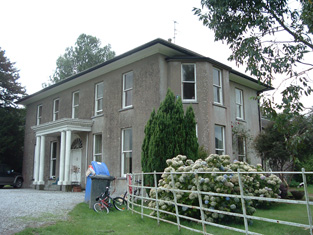
|
| Ballymacsimon | A house located on the Devonshire estate and occupied by John Kirby in the mid 19th century. The buildings were valued at £25. William Kirby held 2 townlands in the parish of Aghera at the time of Griffith's Valuation. Home of the Collins family in the mid 20th century and still inhabited. | |
| Ballinterry | Hajba writes that this property had passed from the Terrys to the Earls of Barrymore at the beginning of the 18th century. In 1814 it was the residence of the Reverend John Ross and in 1837 of Archdeacon Ryder. The Archdeacon was still resident at the time of Griffith's Valuation when the buildings were valued at £21. It now operates as a luxury guesthouse. |

|
| Ballycurrany House | This house was occupied by Joseph Wilson at the time of Griffith's Valuation. He held it from James H. Smith Barry and it was valued at £13. It is no longer extant. | |
| Ballynaclashy House | Occupied by Henry Wilson in the early 1850s, held from James H. Smith Barry and valued at £10.10 shillings. Herny Wilson of Ballynaclashy owned 83 acres in the 1870s. A house is still extant at the site. | |
| Glenview | George Courtenay is recorded as resident at Glen-View in 1814 and also in the early 1850s when he held the property from James H. Smith Barry. The buildings were valued at £9. In 2010 it was offered for sale. |
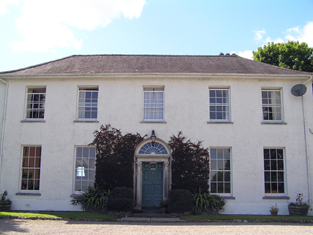
|
| Leamlara | The seat of a branch of the Barry family for over two centuries, the house was demolished in 1966. At the time of Griffith's Valuation it was valued at £36 and held by Penelope Barry in fee. In the sale rental of 1851 the house is described as "built on a porous rock, which keeps the ground floor always dry". In 1906 the house was occupied by Henry S. Barry. The location of this house now appears to be close to or part of a reservoir. |
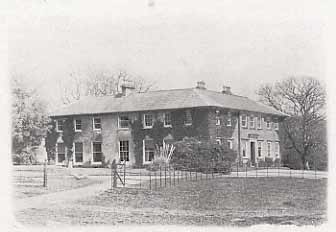
|
| Windsor House | Dominick Sarsfield was living at Windsor, Cork, in 1814 and by 1837 it was the property of J. Martin. Joseph Martin held this house valued at £13.10 shillings from the Earl of Bandon in the early 1850s. Windsor House is still extant and occupied. |

|
| Killahora House | J. Martin is recorded as resident at Killahora in 1837. At the time of Griffith's Valuation John Martin held a house valued at £25 from the Earl of Bandon. A house is still extant at this site. | |
| Union Lodge | This house was the residence of the Reverend William Gifford in 1837. At the time of Griffith's Valuation Hughes Martin was the occupier. He held the property from William Coppinger and the buildings were valued at £21. | |
| Garrancloyne House | This was the original home of the Coppingers of Middleton. A substantial house with a gate lodge is marked on the first Ordnance Survey map but by the time of Griffith's Valuation the house with the largest valuation in this townland was £2. It was occupied by Hughes Martin and held from William Coppinger.In 1786 Wilson refers to "Killycloyne" as a seat of the Martin family in this area. | |
| Killora Lodge | This house was the residence of Reverend R. Berry [Bury] in 1837 and was unoccupied at the time of Griffith's Valuation. Reverend Robert Bury was the immediate lessor and the buildings were valued at £20. It is still extant and occupied. |

|
| Toureen Lodge/Ashbourne | At the time of Griffith's Valuation the Reverend Robert Bury was occupying a house in this townland valued at £17 and held from the Earl of Bandon. It is labelled Toureen Lodge on the 1st edition Ordnance Survey map and as Ashbourne on the 25-inch edition of the 1890s. In the twentieth century it became famous for its well-known gardens, laid out by Richard H. Beamish. |

|
| Johnstown House | Johnstown was the home of Sarsfield Esq in the 1770s and 1780s. William Martin is recorded as resident at Johnstown in 1814 and Mrs Palmer in 1837. John Courtney occupied the house valued at £21+ in the early 1850s. He held it from the Earl of Bandon. The original house is not extant. | |
| Anngrove | Bence Jones writes that this was originally a Cotter residence, sold to the Earls of Barrymore before the mid 18th century. Dobson Esq was resident in the 1770s and 1780s. By 1814 Francis Wise was resident and was still resident at the time of Griffith's Valuation, when the house was valued at £30 and held from Sir William Clarke. The house was later inherited by the Gubbins family. Demolished post 1950. | |
| Rockville | The Barrys were inhabiting Rockville by the mid 18th century. William Barry was resident in 1814 and his seventh son Thomas Barry in 1837. In the early 1850s Garret Barry was occupying this house which he held from Sir William Clarke. It was valued at £15.15 shillings. | |
| Sunville | A property held from Francis Wise in the mid 19th century by Thomas Donovan. The buildings were valued at £15.10 shillings. In the 1870s Thomas Donovan of Sunville, Johnstown owned 174 acres in county Cork. | |
| Greenville | Garret Barry, eight son of William Barry of Rockville, occupied this house in the mid 19th century. He held it in fee and it was valued at £17+. He was a racehorse owner and died unmarried. Greenville passed to his nephew Dr William Barry of Rockville and Greenville. Lucy K. Barry was resident in 1906 when the buildings were valued at £34. | |
| Dundullerick House | Occupied by J[ames] Barry in 1837 and by his son William Barry in the early 1850s. The property was held in fee with 353 acres and the buildings were valued at £26+. William's nephew James William Creagh Barry later purchased Dundullerick. | |
| Dundullerick | This house was occupied by Edmund Barry in the mid 19th century, when it was valued at £16+ and held in fee. Edmond married in 1836 Sarah Isabella daughter of Pierce Creagh of Rockforest Lodge. Their grandson sold Dundullerick to his cousin James William Creagh who took the additional name of Barry. This house appears to have remained in Creagh Barry possession until the 20th century. \in 1906 valued at £19.10 shillings and occupied by Pierce Barry. | |
| Cloneen | Leet records - Hoare esq as resident at Cloneen, Middleton, in 1814. In the mid 19th century Robert Lunham held a house valued at £20+ from Bingham Sarsfield in this townland. Sarsfield held the property from Abraham Devonsher. When Cloneen was advertised for sale in 1870 it was occupied by Joseph Sheedy. Bingham Sarsfield of Cork owned 266 acres in county Cork in the 1870s. A house is still extant at the site. | |
| Curragh | At the time of Griffith's Valuation John Courtenay held a house, offices and gate lodges at Curragh, valued at £28. The first Ordnance Survey map shows a farm yard for Ballyedmond in Curragh. The 25-inch map of the 1890s still indicates extensive farm buildings, together with kennels. Farm buildings remain at the site. | |
| Ballyedmond | Ballyedmond passed through marriage from the Brownes to the Courtenays. Robert Courtney was the proprietor of Ballyedmund in 1814. John Courtenay held Ballyedmond from the Reverend William Halloran in the mid 19th century. The buildings were valued at £199. The seat of Robert Courtney Smith-Barry in 1894. Inherited by the Smith Barrys and sold by them in the 1960s. The house no longer exists but much estate architecture including gate lodges survives. |
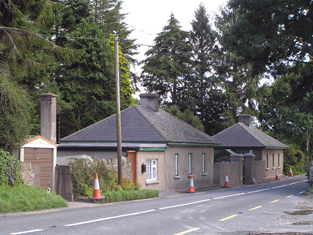
|
| Springhill | This house was a Wakeham home from at least the mid 1770s. William Wakeman was resident at Springhill in 1814 and W.J. Wakeham in 1837. Joseph B. Wakeham held Springhill in fee at the time of Griffith's Valuation when the buildings were valued at £15+. | |
| Caherduggan | In 1786, Wilson refers to "Carduggan" as the seat of Mr. Davis. Denis O'Callaghan was living at Cadogan (Caherduggan) by 1837. He held the property in fee at the time of Griffith's Valuation when it was valued at £48. This house remained in the possession of the O'Callaghan family until the 20th century. It is still extant but unoccupied. |

|
| Ballytrasna House | No house with demesne is marked on the first Ordnance Survey map in this townland but by the time of Griffith's Valuation Timothy O'Regan was occupying a house and other buildings valued at £19+ which he held from John Courtenay. Farm buildings are still extant at this site. A property labelled Ballytrasna House is shown on the 25-inch map of the 1890s, located in the next townland of Glenawillin [W876796]. This property was also being leased by O'Regan from the Courtenay estate at the time of Griffith's Valuation, when it was valued at £5+. However, it had become a more substantial property by the 1890s. A house is still extant at the site. | |
| Leadinton | The home of the Atkin family for most of the 18th and 19th centuries. In 1786 Wilson refers to it as the seat of Mr. "Arkin". Valued at £16.15 shillings at the time of Griffith's Valuation, it was occupied by the Reverend Joseph Wright and held from J.T. Atkins Swanne. | |
| Glenville | Originally a Coppinger property sold to the Hudsons in the mid to late 18th century. The Hudsons built a new house and this house was added too in 1887. E. G. Hudson was resident at Glenville in 1814 and Lewis records the Reverend E. G. Hudson as the proprietor of Mount Pleasant in the parish of Ardnageehy in 1837. In the mid 19th century William E. Hudson held the property valued at £46 in fee. Inherited by William E. Hudson's nephew Sir Edward Hudson Kinahan who was the occupier in 1906 when the house was valued at £150. Sold to the Bence Jones family in 1949. Also known as Mount Prospect and The Manor, this house was the home of Mark Bence Jones, author. |
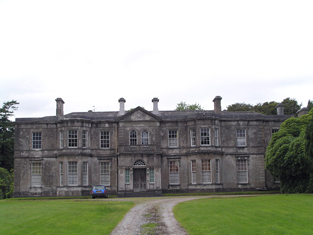
|
| Brooklodge House | A house and paper mill valued at £30 held by Mary Eliza Phair from the Reverend Robert Bury at the time of Griffith's Valuation. This Phair family were involved in paper mills in a number of townlands in this locality. | |
| Brookville | Home of Cornelius O'Callaghan who held it from the Reverend Robert Bury in the mid 19th century. The buildings were valued at £35. |

|
| Blossomgrove | Blossomgrove was the residence of William Casey in the early 1850s. He held the house valued at £22 and 335 acres from Simon Dring. A house is still extant at the site. | |
| Butlerstown | Nathaniel C. Martin held a house, offices, foreman's house and spade factory valued at £25 from Francis Beamish. The property is labelled Butlerstown House on the 25-inch Ordnance Survey map of the 1890s when the spade factory is no longer visible. There is still an extant house at the site. | |
| Corbally | ''Burke's Irish Family Records'' describes the Sheehys of Corbally House from about the late 18th century. In the mid 19th century the house was occupied by William J. Sheehy, second son of Bryan Sheehy of Corbally House, died 1806. The buildings were valued at £27 and the property was held from the Reverend Edward Newenham. This house was named 'Mill View' on the first Ordnance Survey map. Mill View was still occupied by Sheehys when it was advertised for sale in 1871. | |
| Maryborough | The sale rental for the Mannix estate states that this house was built in 1816 at a cost of £3,000. Occupied by J. Wallis in 1837 and by Henry Mannix in the early 1850s. Mannix held the property from the representatives of the Reverend Robert Dring and the buildings were valued at £28. |

|
| Rockgrove | The seat of the Dring family in the 18th and 19th centuries, valued at £50 in the early 1850s. Bence Jones writes that it was sold by the Drings in the early 20th century, valued at £80 in 1906, and was restored in the 1970s. The house is now used as offices. |
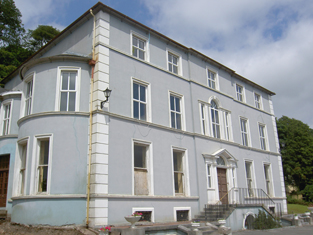
|
| Riverstown | An early 18th century house with fine plasterwork by the Francini brothers, the seat of the Browne family for two and a half centuries. The Brownes were still occupying the house in 1837 but John Carmichael is recorded as the occupier in the early 1850s when it was valued at £32.10 shillings. Restored in the 1960s by the Dooleys with help from the Irish Georgian Society. |

|
| Glyntown House | Unoccupied in the early 1850s, this house was held by Eliza McCaul from William B. Hoare. It was valued at £35. Bence Jones writes that this house, now demolished, was built by Samuel McCall and was owned in the 20th century by the Dring family. | |
| Ballinglanna | Occupied by J. Newsom in 1814 and E. Newsom in 1837. Edward Newsom held this house from Eliza McCaul and Louis Denay at the time of Griffith's Valuation when it was valued at £24. This house is named Glenville on the first Ordnance Survey map. |

|
| Kilcoolishal | Thomas Martin occupied a house valued at £18+ in this townland at the time of Griffith's Valuation. He held it from W. B. Hoare. | |
| Factory Hill | The seat of a branch of the Hoare family in the 18th and 19th centuries. Occupied by E. Hoare in 1814 but by 1837 leased to William Letchfield or Lichfield. He occupied the house in the early 1850s when it was valued at £25. Richard Martin of Factory Hill owned 506 acres in county Cork in the 1870s. A larger property, known as Dunsland House, occupies the site of Factory Hill on the 25-inch Ordnance Survey map of the 1890s. This latter property was later the residence of Joseph Pike and was burnt in August 1920 during the War of Independence. |

|
| Richmond | The home of the Mannix family in the late 18th and 19th centuries. Occupied by S. Oliver in 1814 and by R. Mannis [Mannix] in 1837. [Henry Mannix was resident in the early 1850s when the house was valued at £27 and held from Jonas Morris.] A house is still extant at the site. | |
| Woodville | Woodville was originally a home of the Cummins family. In 1800 Charlotte Cummins married Thomas Mannix. Occupied by N.W. Cummins in 1837 [and by Richard B. Isaack in the early 1850s when it was valued at £23]. Buildings are still extant at the site though extensive modern development has taken place in the area. | |
| Dunkettle | Seat of the Morris family from the late 18th century, occupied by Abraham Morris in 1814 and 1837. Wilson, writing in 1786, provides a detailed description of the demesne. At the time of Griffith's Valuation Jonas Morris held the property from George Newenham. The buildings were valued at £60. Bence Jones writes that this house was built on or close to the site of a previous house belonging to the Trant family. The house was sold in the late 19th century to the Gubbins family. |

|
| Glenburn | Glenburn was occupied by A. Lewis in 1837 and was held in fee by John T.C. Gibbings at the time of Griffith's Valuation. The buildings were valued at £20.15 shilllings. |

|
| Annmount | In the 1770s Falkiner Bart was resident and in 1786 Wilson refers to Annemount as the seat of Sir Riggs Falkiner. Occupied by the Reverend Mr Coghlan in 1814 and in 1837. By the time of Griffith's Valuation Nicholas M. Cummins held this house from the Reverend Coghlan. This house was burned down and all that now remains are the steps. |
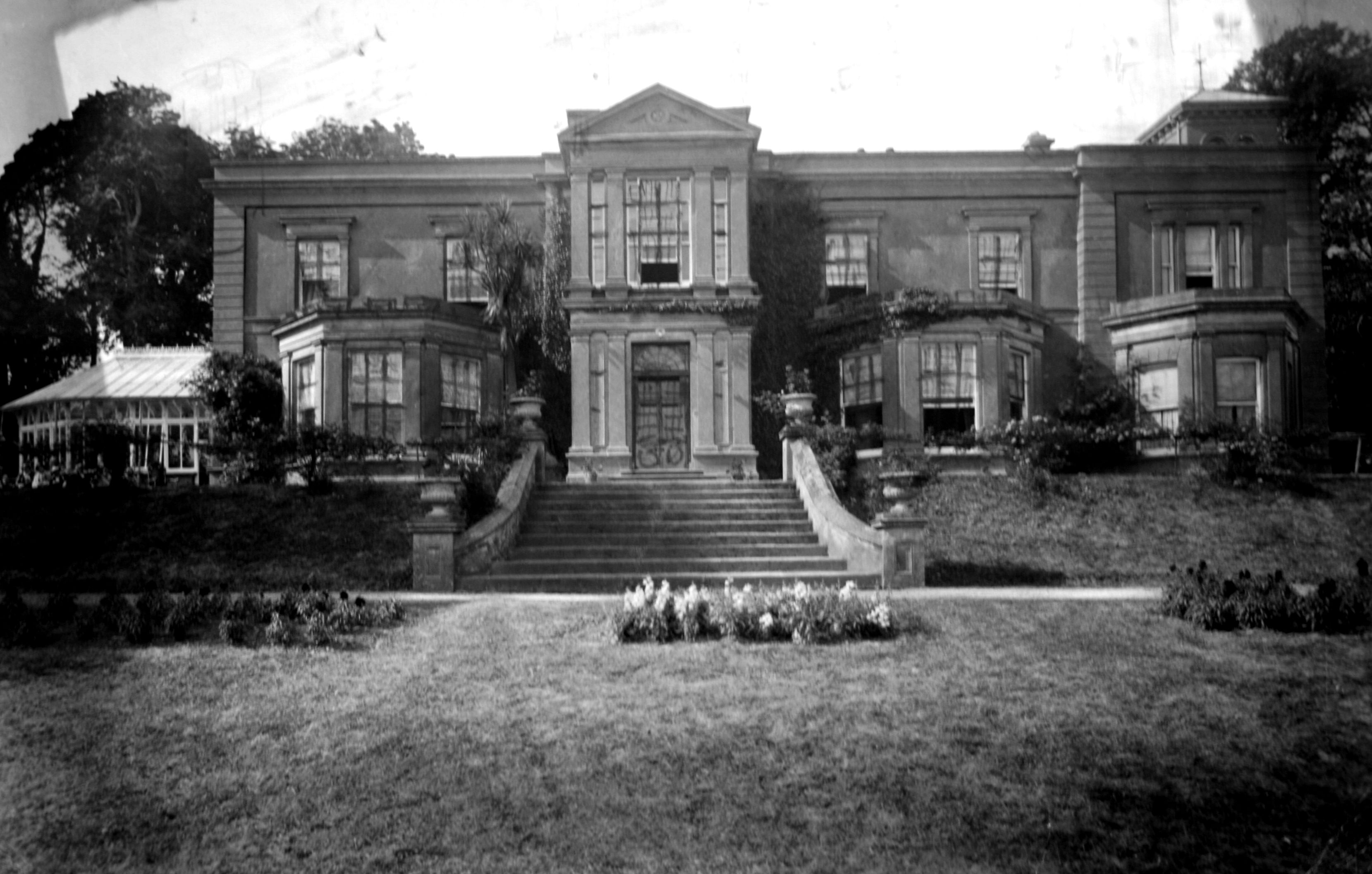
|
| Carrignavar | The castle of Carrignavar was from the mid 17th century the seat of this the senior branch of the McCarthy clan. Bence Jones writes that Carrignavar is a late 19th century castellated house incorporating the remains of the old castle. Lewis refers to Carrignavar as the seat of Justic McCarthy in 1837 and Justin McCarthy junior was resident at the time of Griffith's Valuation when the buildings were valued at £28. Bought by John Sheedy in the 20th century and sold by him in the 1950s to the Sacred Heart Fathers. The house is part of their college complex. |

|
| Ashton Grove | This house is marked Ashton Grove on the first Ordnance Surve map. John Cotter was the proprietor of Ashton, Cork, in 1814 and T. Cleary of Ballingohig in 1837. Thomas J. Cleary held the property from Henry Braddell at the time of Griffith's Valuation when the buildings were valued at £22. Cleary held a cornmill from Braddell in the townland of Kilrussane. James Fitzgerald held 122 acres of untenanted land and buildings valued at £26+ in 1906. |
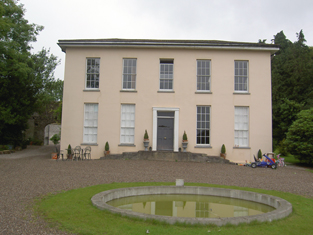
|
| Mitchellsfort/Fellfort | This house was the home of Mitchell Esq in the 1770s and 1780s. Occupied by Brooke Brazier in 1814 and by his son Henry B. Mitchell in the early 1850s. Henry B. Mitchell owned the property in fee and the buildings were valued at £52+. Slater noted it as the residence of R.L. Fell in 1894, now demolished. | |
| Castleview | A Jackson property which was unoccupied in 1837. By the time of Griffith's Valuation Robert Delacour Beamish was resident in the house valued at £34 which he held from the Jacksons. The house was sometimes known as Ditchley House. Now functions as the Radisson Hotel, Little Island. |

|
| Little Island House | A Bury residence, occupied by Richard Bury in 1814, by Phineas Bury in 1837 and by his widow Eliza at the time of Griffith's Valuation. The house was valued at £51 and held from the Earl of Limerick. Bence Jones wrote n 1978 that the house was a ruin and the site is now occupied by industrial buildings. | |
| Inchera | This house, also known as Sun Lodge, was the home of the Oliver family. Occupied by S. Oliver in 1814 and Silver Charles Oliver in 1837 and in the 1850s. The buildings were valued at £54 and the property was held from the Reverend Rowland Davis Gray. Owned by C.E. Murphy in the first half of the 20th century. Post 1950 it was destroyed by a fire. | |
| Hermitage | A house valued at £18, occupied by Eliza Martin and held from Robert Webb at the time of Griffith's Valuation. In the 20th century the home of Edmund Glen Browne. |

|
| Wood View | The home of J. Cremen in 1837 and Jeremiah Crimmin in the early 1850s, when the house was valued at £16 and held from Thomas Wyse. | |
| Sarsfieldscourt [Old] | In 1837 Lewis refers to Sarsfieldscourt as an ancient mansion "formerly belonging to the Sarsfield family but now to Mr Rutland [Putland] of Dublin". On the first Ordnance Survey map one building is marked as "in ruins". Another building also named Sarsfield's Court is marked closer to the Glashaboy River. At the time of Griffith's Valuation Charles Putland junior was recorded as occupier, holding the house valued at £13 from his father Charles Putland. This latter property is labelled Beechmount on the 25-inch Ordnance Survey map of the 1890s. A property labelled Sarsfieldcourt House is also located in the townland on the later map [W723779]. It is no longer extant and St.Stephen's Hospital now occupies the grounds. | |
| Castlelyons House | Situated on 2 acres in the centre of the town of Castlelyons this house was in the possession of the related clerical families of Browne and Ryder in the 18th and 19th centuries. Occupied by the Reverend Joshua B. Ryder in the mid 19th century. He held the property valued at £30 from Samuel Perrott. Still valued at £30 this house was occupied by the representatives of Andrew W. Ryder in 1906. |

|
| Berry Hill | The National Inventory of Architectural Heritage states that this house dating from circa 1700 was a dower house for the Barrymore family of Castlelyons Castle. By the mid 19th century it was in the possession of the Perrott family and occupied by the Reverend Philip Berry who held the buildings valued at £21 with 15 acres. This house is still occupied. |
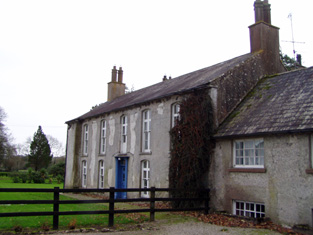
|
| Park Farm House | Henry Morrogh of Park Farm was a younger son of James Morrogh of Cork. He was resident at Park Farm in 1837 and in the early 1850s when the house was valued at £35 and held in fee. He married Helena Power. Mrs Helen Morrogh owned 828 acres in county Cork in the 1870s. | |
| Lauriston | A house valued at £40 at the time of Griffith's Valuation and held by Nicholas D. Murphy from Joseph Anderson. | |
| Lotabeg | Bence Jones writes that this house was built circa 1800 for Sir Richard Kellett 1st Baronet. Lewis gives D. Callaghan as the proprietor of Lotabeg in 1837. Poole Hickman was resident at the time of Griffith's Valuation, holding the property from William Galway. The buildings were valued at £87. Home of the Mahony family in the late 19th century. | |
| Lota Lodge | Occupied by James H.Smith Barry in 1837 and at the time of Griffith's Valuation when the buildings were valued at £75 and held from John Courtney. The residence of Arthur Frederick Sharman Crawford at the end of the 19th century. Bence Jones writes that this house was partially destroyed by fire in 1902 and rebuilt the following year. It is now the Vienna Woods Hotel. |

|
| Lota Park | Built in the early 19th century by John Power and purchased by Jeremiah James Murphy circa 1836. By the early 1850s occupied by Colonel Ludlow Beamish who held it from John Courtney. In the 1870s the home of Edmund Burke. In the 20th century home of Joseph Gubbins and later of Mrs Francis Mahony. Now operates as a health care facility. |

|
| Lota House | Occupied by William Hastings Greene in 1837 [of the Greene family of Greenville, county Kilkenny] whose interest in Lota was advertised for sale in January 1851. William H. Greene was married to Mary Sarsfield of Doughcloyne and held Lota on a long lease from Robert Courtenay. George A. Wood was tenant in 1851 and resident at the time of Griffith's Valuation. He held the house valued at £85 from John Courtney. Now a hospital site. |
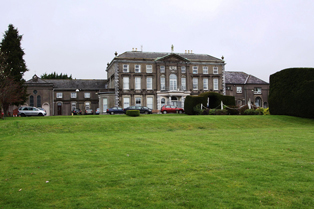
|
| Lotamore House | The residence of the Honourable C.L. Bernard in 1837 and of Frederick Hamilton at the time of Griffith's Valuation. He held the house valued at £64 from William C. Rogers. The interest of Joseph Harrison in Lotamore was for sale in February 1871. Sir William Bartholomew Hackett was the tenant. Owned in the late 19th century by the Perrier family and the Mahonys. Wilson writing in 1786, refers to Lota as the seat of Mr. Rogers. It has operated as a guesthouse for many years. |

|
| Kilbarry | In the mid 19th century occupied by George Wise and held from James H. S. Barry. The buildings were valued at £35. | |
| Ballyphilip House | This property was leased to Samuel Adams Austen and occupied by John Forrest in the early 1850s. When the Newenham's fee of Ballyphilip was for sale in 1865 David Cagney was resident. A house still exists at the site. | |
| Trantstown | A Trant home in the 18th century, occupied by Mrs Pepper in 1837 and by James Barry in the early 1850s. He held the house valued at £8+ from Lady A.H. Fitzgerald. Buildings are still located at this site. | |
| Ballynaroon | Griffith's Valuation records a house valued at £13.15 shillings in this townland in the mid 19th century. It was occupied by Charles W. Welland and held from the representatives of Viscount Midleton. The house is named The Highlands on the 25 inch to the mile map. Only yard buildings now remain at this site. | |
| Corbally South | Catherine Delany held buildings valued at £11 from William J. Sheehy in Corbally South at the time of Griffith's Valuation, with 148 acres. Buildings are still located at this site. | |
| Ballinderrig | Ballinderrig is marked on the first edition Ordnance Survey map and was occupied in the mid 19th century by Jane Cantillon. She held the property valued at £13+ from Eliza Bury. Catherine Cantillon was also resident in the townland at Courtstown Cottage Grid Ref W774 720. By the publication of the 25-inch Ordnance Survey map in the 1890s the latter property has become known as Courtstown House. It is still extant. | |
| Hunting Fort | A house valued at £10 occupied by Patrick Keneiry and held by him with 338 acres from the Duke of Devonshire in the mid 19th century. A building is still extant at this site. | |
| Peafield (Templemodan) | In 1786 Wilson refers to Peafield as the seat of Archdeacon Mockler. There is no substantial house shown in this area on the 1st edition Ordnance Survey map. By the time of Griffith's Valuation, the townland was in the possession of Thomas Boyce. | |
| Castle Lyons | Wilson, writing in 176, refers to the accidental burning of the seat of the Earls of Barrymore. "The mansion house, with the furniture and a valuable collection of pictures, were entirely destroyed by an accidental fire". Some ruins remain at the site. A dower house, built by the Barry family towards the end of the 18th century, is still extant and known as Berryhill. . |

